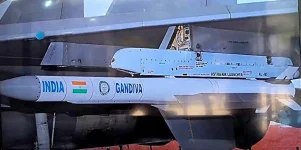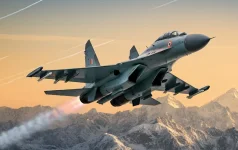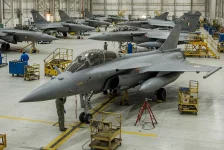- Views: 2K
- Replies: 20

An Indian Air Force (IAF) Apache helicopter, stranded in the challenging terrain of Ladakh since an emergency landing in April, has finally been recovered following a complex and arduous operation.
The Boeing Apache, forced to land north of the towering Khardung La pass at an altitude of 12,000 feet, has been meticulously dismantled and is now being transported by road to Leh.
The rescue mission, which spanned several months, showcased the IAF's unwavering resolve and technical expertise in navigating the formidable high-altitude terrain. Airlifting the heavy Apache was deemed impossible due to the limitations posed by the altitude and the weight constraints of the IAF's Chinook helicopters.
Undeterred, a team of specialized personnel embarked on a challenging trek to the remote landing site. After a thorough assessment of the damage, the team embarked on the painstaking task of dismantling the helicopter. Each of the approximately 400 parts was carefully carried by hand to the nearest accessible road, where they were loaded onto trucks for transport to Leh.
With only the airframe and engine remaining at the site, a specialized crane has been deployed. This crane, operated by highly trained mountaineers, will lift the remaining components and meticulously lower them onto a waiting truck using long steel wires, marking the final stage of this remarkable recovery operation.
It is important to note that this incident occurred amidst the ongoing military standoff with China, highlighting the critical role played by the IAF in safeguarding India's borders.
The Apache, known for its formidable attack capabilities against both ground and air targets, is a crucial asset in the IAF's arsenal. The deployment of Apache helicopters in Ladakh underscores India's commitment to maintaining a strong defense posture in the region.
The IAF had procured 22 Apaches from US-based Boeing at a cost of Rs 14,910 crore.




